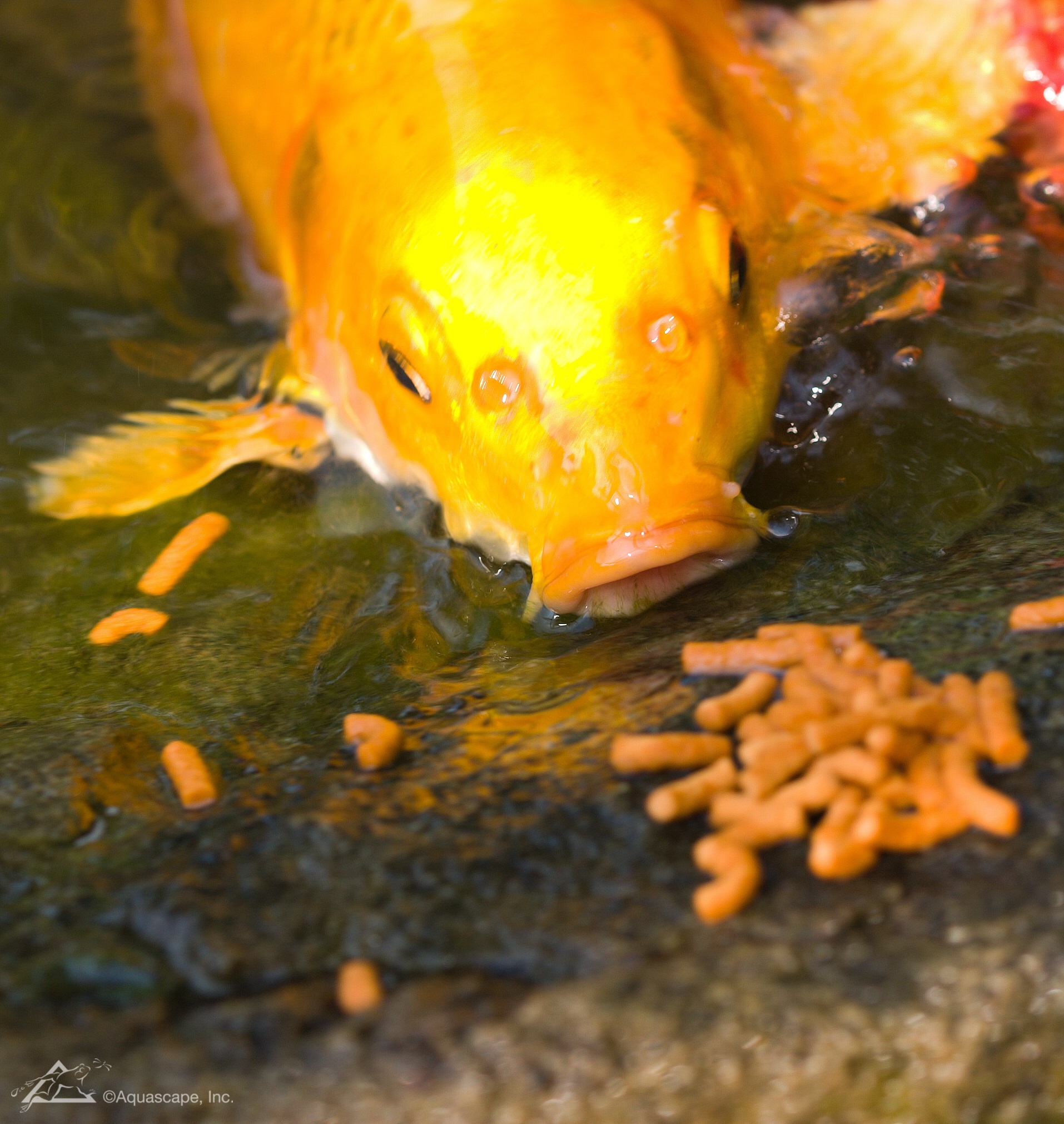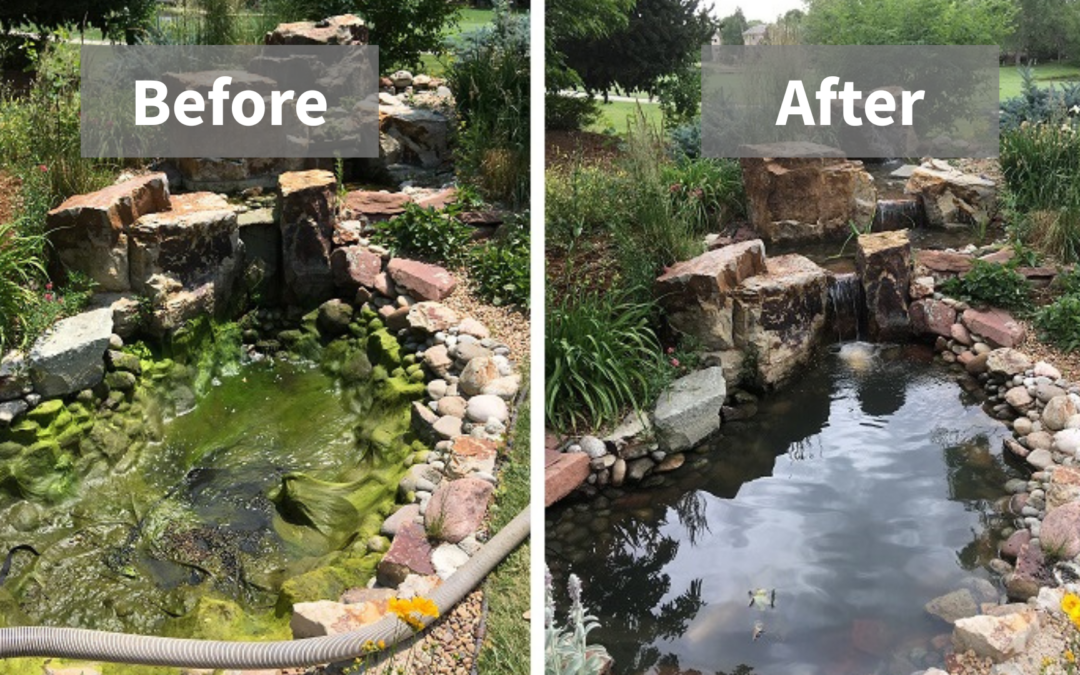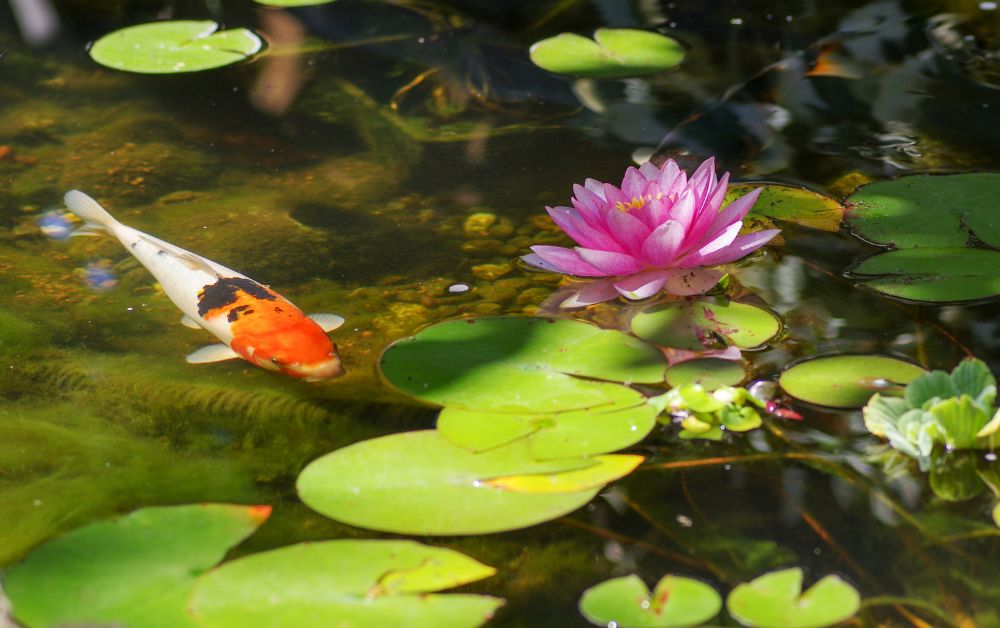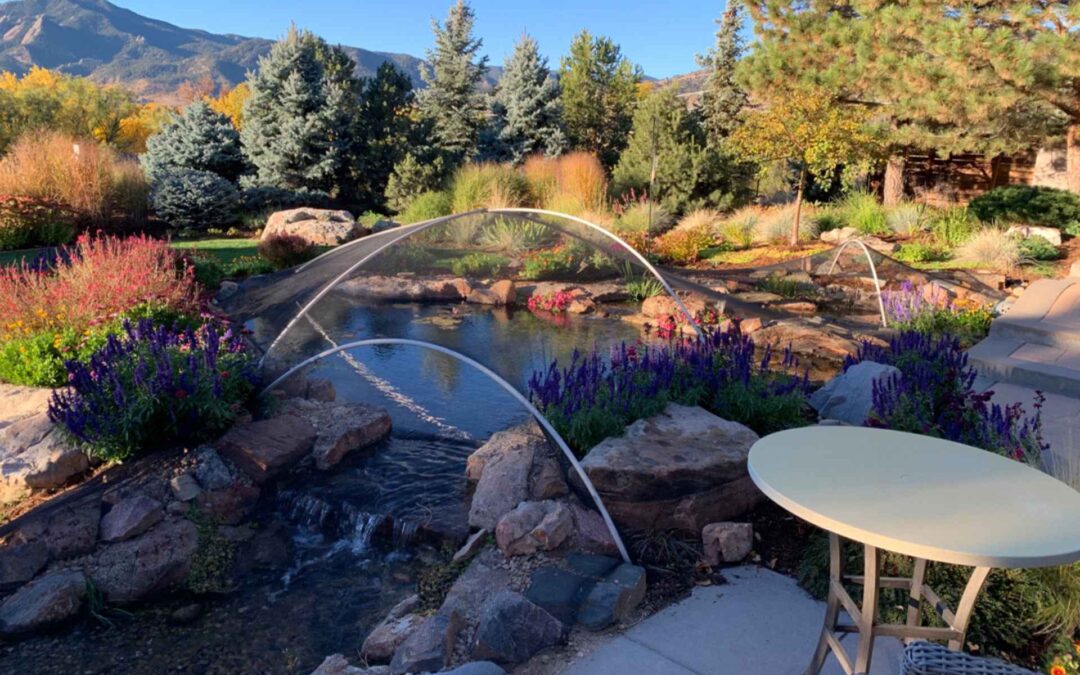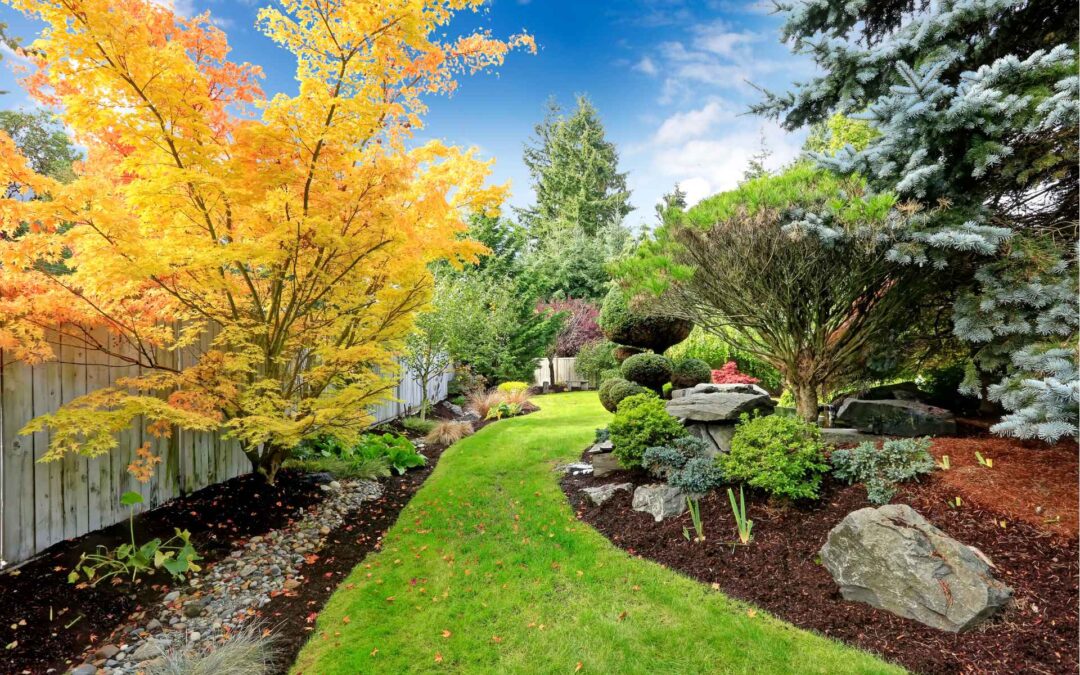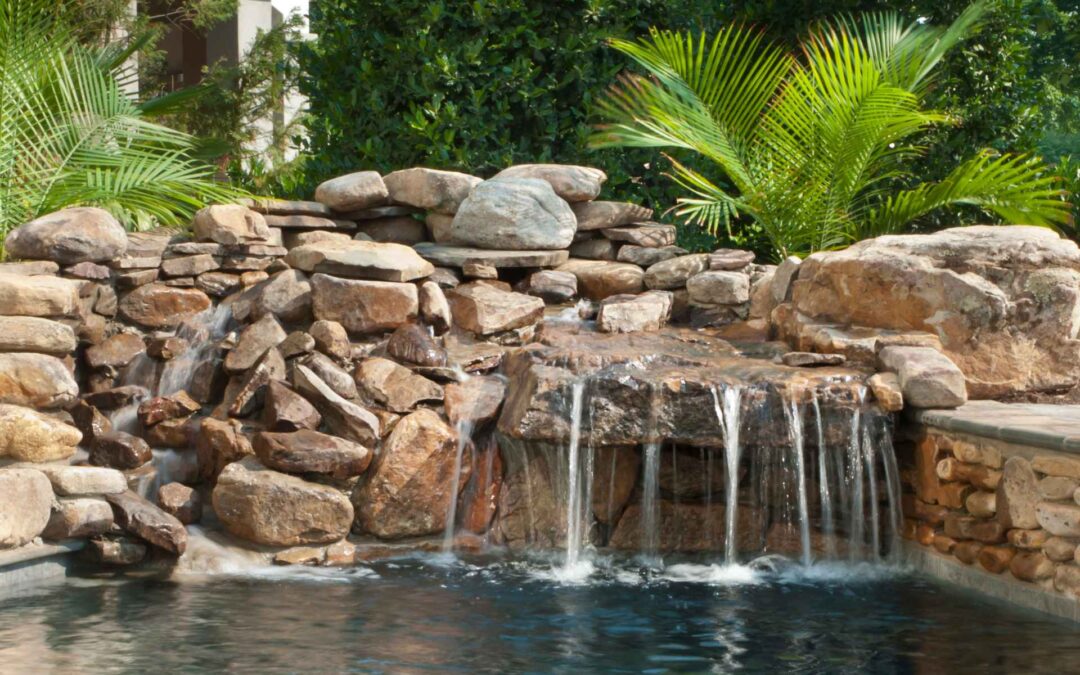The Basics when it comes to koi food:
- Feed fish only what they can eat in a few minutes.
- Don’t throw in food and walk away! They need to be watched so you know if they have eaten all the food.
- They can be fed at different frequencies depending on your pond environment and expectations. During the summer:
- When the pond is full of plant life, some algae and other living things like bugs, then it may be fine to feed them once a week.
- No plants and very little life in a pond? You’ll need to feed the fish everyday at least once.
- If you are trying to help the fish grow and want them to come to greet you each time you are near, then feed them 2 to 4 times a day (still only what they can eat in a few minutes). The more you feed them the more nutrients will be in the pond to feed algae and plants. If you have a lot of plants algae may not be an issue. If you don’t, algae might creep in on you. Some algae is okay. If you have the expectation of no algae, feed the fish less.
- Nutritional needs of koi change as the water temperatures change.
- The fish will eat more when the water temperature is between 60 and 85 degrees. They eat less when it is above 85 degrees and will eat less when it is below 60. Do not feed them at all below 50 unless you have special winter food and then do not feed them below 45 degrees.

What type of koi food is best?
They need more protein, energy and vitamins when the water is above 60 degrees. Labels on fish food will tell you what you’ve got. Remember that if you are not growing show koi to enter in koi exhibits, you do not have to get the very expensive fish food!
Looking at labels
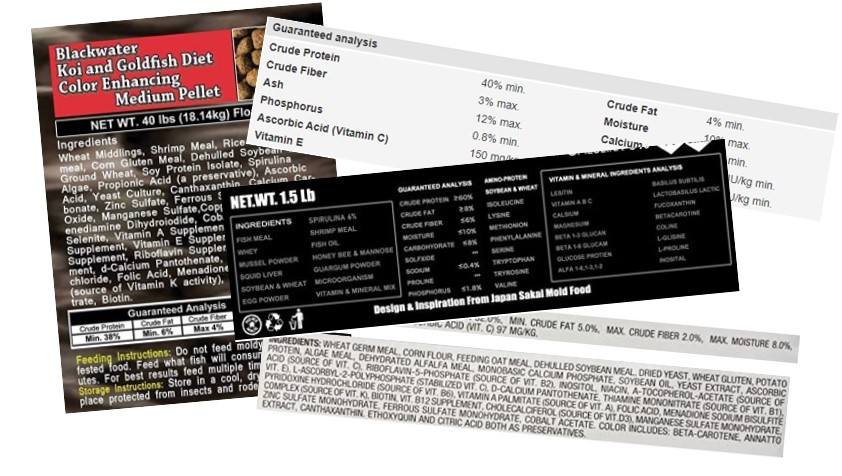
Protein Content
During the summer they need a protein-rich food to help them grow and to keep their colors vibrant. The label on the back of the fish food should show the ingredients and the percentages. Look for a between 30 and 40% protein for summer feeding (when the water temperature is over 60 degrees). More than 40% and the fish have a hard time digesting it.
The source of the protein is important too. Offering food that has protein from sources that are similar to what they might find in the wild is the most healthy. Some fish foods have protein in the form of fish meal, shrimp meal, anchovy, or herring meal. This is good quality protein for koi.
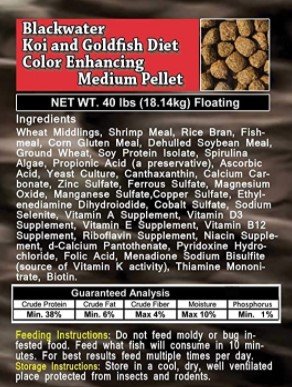
A plant protein like wheat germ is not necessarily a bad thing and it gives koi energy, but we like to see a non-plant based source of protein listed first or second on the fish food label.
Fat content
Fat content should be between 3 and 10%. 6 to 10% is more for growing young koi (first 3 years of life) and after that 3 to 5% is just fine.
Color enhancement
You may see spirulina listed. This is a natural color enhancer. There are many other color enhancement ingredients that you can read about. We are keeping it to the basics here!
If you see Calcium Montmorillonite Clay listed, this helps them with digestion.
Size of pellets
Food pellets come in different sizes. The larger the koi, the larger they prefer their food. If you have a variety of sizes in the pond, use a mixture of very small and large pellets.
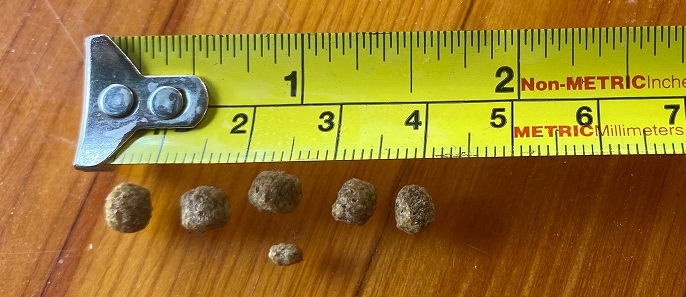
Should you buy in bulk?
Buying in large quantities may be best kept for those that have 100 fish or more. Fish food can go bad when kept in the heat or when kept for long periods of time. Store the food in a cool place, out of the sun.
Do not feed food that smells rancid or has mold on it! Click HERE to learn more about storing food.
What about winter?
When the water gets down to 50 degrees you might feed them a winter type fish food which is easier for them to digest. Keep in mind you need to feed them less as well. They are getting ready for a sort of hibernation called “torpor”. This is when their metabolisms slow down and they become far less active. In the middle of the winter they may be seen sitting at the bottom of the pond not moving at all.
What about treats?
Having something on hand to feed the fish when visitors come by is a good idea! Koi Krunchies are slightly bigger than regular food and are meant to be a treat. The protein and fat are less and they are perfect to use when we want to feed the fish but don’t want to overfeed them.
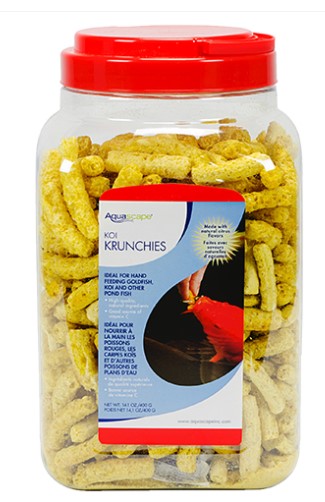
Did you know that another great fish treat is fruit and vegetables! YES! They will eat blueberries cut in 1/2, watermelon, zucchini slices, and even sliced pineapple!
Issues?
- Excess algae: increase plant life, make sure you have small gravel in the pond and if you already have these things, cut back on feeding the fish.
- Fish are attacking water lilies: Feed them more often and feed them more. Large fish, 24″ and larger need to be fed aggressively.
- Fish are attacking the water hyacinth: let them! They are getting vitamins from them. Set some aside to spread and grow larger and then put them in all at once. Then the fish can’t destroy them so badly.
- Uneaten fish food found mushy in skimmer: lower the quantity of food being given at one time.

Just want to know what brand of food to buy?
I like to use a couple different brands to make sure my koi are getting everything they need.
Blue Ridge Fish Pellets Platinum Professional and Aquascape Premium Fish Food are what I have been using. They are affordable and yet they have good nutrients. The Blue Ridge food doesn’t come in different sizes which is one reason I also use other brands. The pellet is good sized, but too big for my fry.
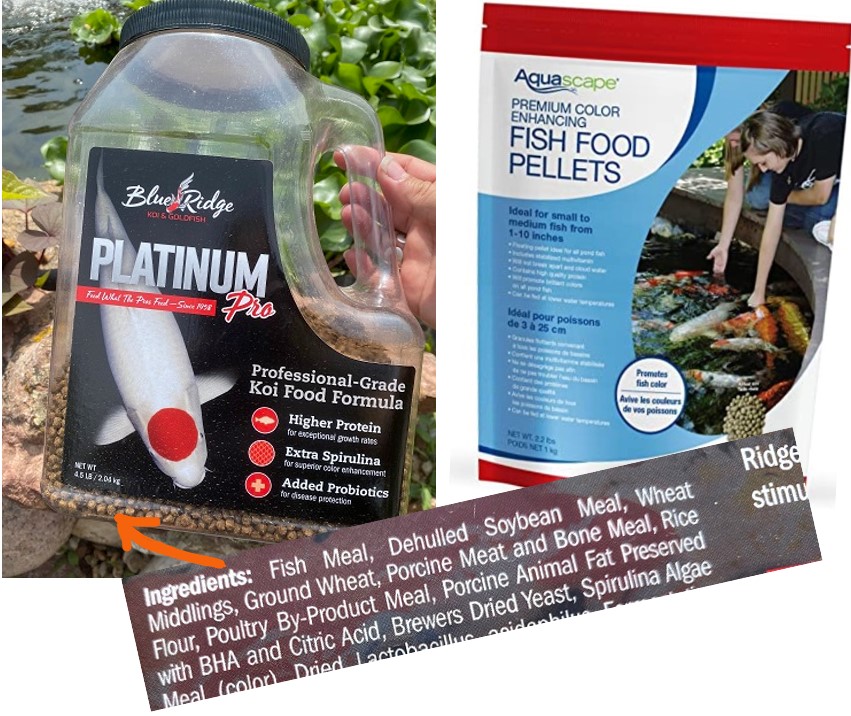
If humans ate one nutritional food all the time without switching it up they might not get a rounded and balanced diet. It’s the same thing with koi. Giving them a variety of food with treats here and there is the best way to ensure an overall healthy and balanced diet.
For the basic backyard pond a good quality fish food helps keep the koi healthy and bright. Koi food that is far more expensive is not necessary!

